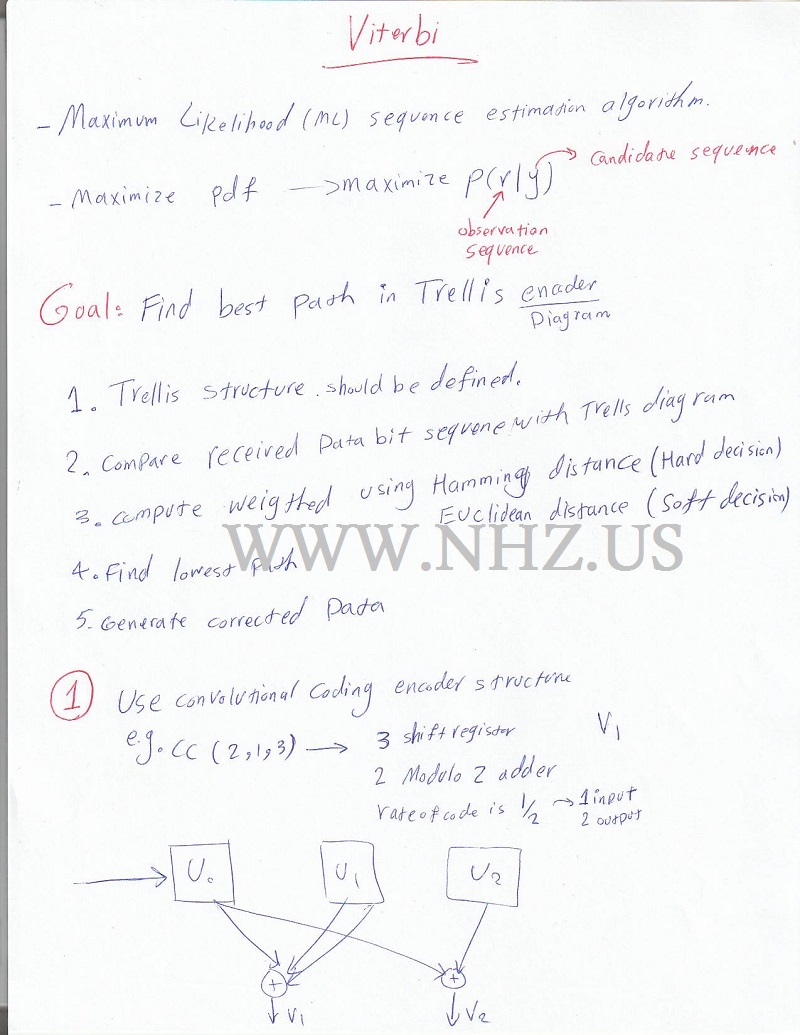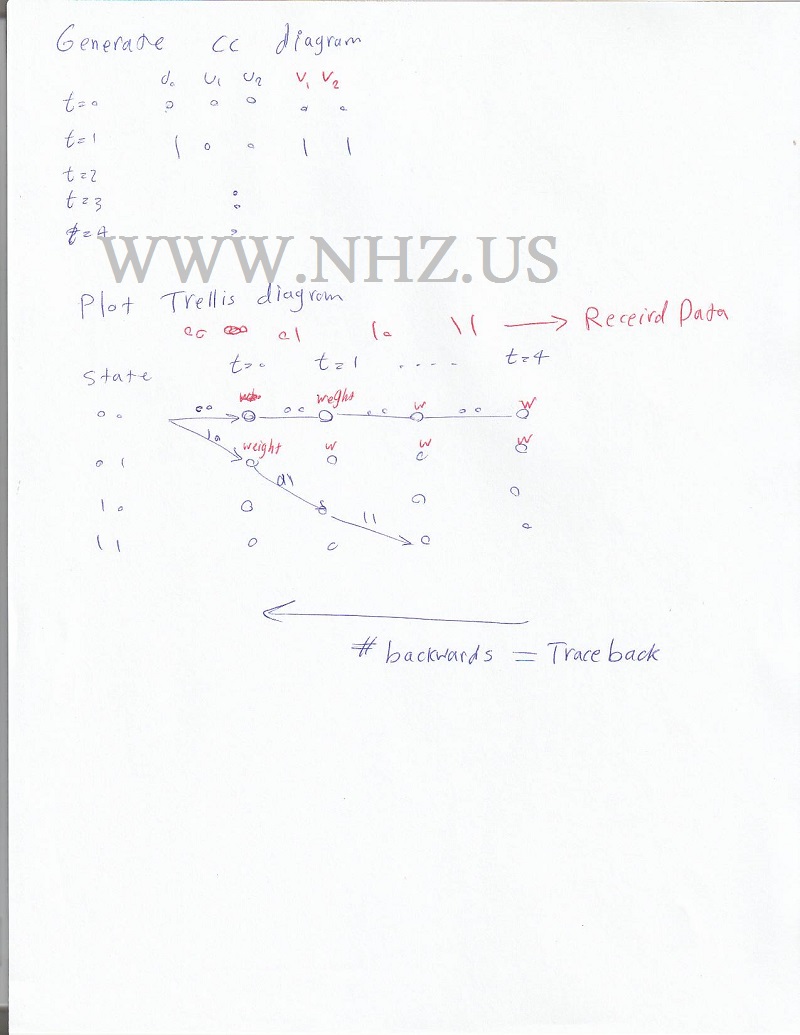Understanding Viterbi Error Correction Using Trellis Diagram and Convolutional CodingError correction is crucial in digital communication systems to ensure data integrity and reliability. One of the most effective error correction techniques is Viterbi error correction, which utilizes Trellis diagrams and convolutional coding. This article will provide a comprehensive explanation of these concepts in simple terms. Introduction to Error CorrectionIn digital communication, errors can occur due to noise, interference, or signal degradation. Error correction methods are employed to detect and correct these errors, ensuring accurate data transmission. What is Convolutional Coding?Convolutional coding is a type of error-correcting code used to add redundancy to the transmitted data. It converts the input data into coded output using a set of rules defined by the code's structure. This redundancy allows the receiver to detect and correct errors. How Convolutional Coding WorksConvolutional coding involves using a shift register to process the input data bits. The shift register consists of several stages, each holding one bit of data. The output bits are generated by combining the bits in the shift register according to predefined patterns called generator polynomials. The Role of Trellis DiagramsA Trellis diagram is a graphical representation of the state transitions in a convolutional encoder. It shows how the encoder's state changes over time and how the output bits are generated based on the input bits. Structure of a Trellis DiagramA Trellis diagram consists of nodes and branches:
The Trellis diagram provides a visual way to understand the encoding process and the possible paths the encoder can take based on different input sequences. Viterbi Algorithm for Error CorrectionThe Viterbi algorithm is a decoding technique used to find the most likely sequence of input bits that could have generated the received coded bits. It does this by tracing the optimal path through the Trellis diagram. Steps of the Viterbi Algorithm
Examples of Viterbi Error CorrectionExample 1: Simple Convolutional EncoderConsider a convolutional encoder with a constraint length of 3 and generator polynomials [1, 1, 1] and [1, 0, 1]. The Trellis diagram for this encoder will show the possible state transitions and the output bits generated for different input sequences. Example 2: Viterbi DecodingUsing the Trellis diagram, the Viterbi algorithm can decode a received sequence. For instance, if the received sequence is [11, 01, 10], the algorithm will trace the optimal path through the Trellis to determine the most likely input sequence that generated this output. Importance of Viterbi Error CorrectionViterbi error correction is widely used in various communication systems, including:
Advantages of Viterbi Error CorrectionViterbi error correction offers several advantages:
Challenges and ConsiderationsDespite its advantages, Viterbi error correction has some challenges:
Question & AnswerQ: What is convolutional coding? A: Convolutional coding is an error-correcting technique that adds redundancy to data by converting input bits into coded output using a shift register and generator polynomials. This redundancy helps detect and correct errors. Q: What is a Trellis diagram? A: A Trellis diagram is a graphical representation of the state transitions in a convolutional encoder. It shows how the encoder's state changes over time and the possible paths based on different input sequences. Q: How does the Viterbi algorithm work? A: The Viterbi algorithm decodes received coded bits by tracing the optimal path through the Trellis diagram. It involves initializing path metrics, updating them for each time step, and selecting the path with the lowest metric to determine the input sequence. Q: What are the advantages of Viterbi error correction? A: Viterbi error correction offers high accuracy, efficiency, and robustness against noise and interference, making it suitable for various communication systems like wireless networks, satellite communication, and digital broadcasting. Q: What are some challenges of using the Viterbi algorithm? A: The Viterbi algorithm can require significant memory and computational resources, especially for codes with long constraint lengths. Balancing performance and resource usage is essential in designing systems that use Viterbi error correction. ConclusionViterbi error correction using Trellis diagrams and convolutional coding is a powerful method for ensuring data integrity in digital communication systems. By understanding the principles of convolutional coding, Trellis diagrams, and the Viterbi algorithm, engineers can design robust systems capable of handling errors and maintaining high-quality data transmission across various applications.   |